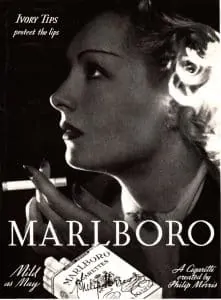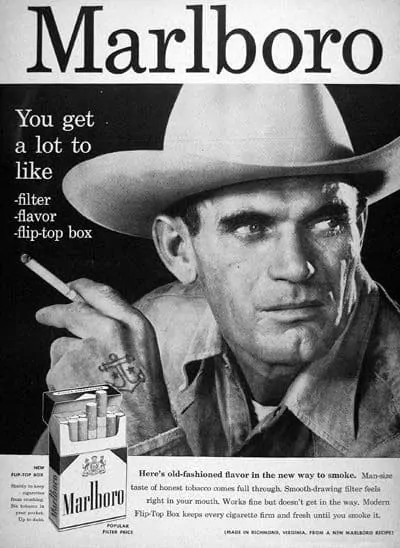For ages, marketing has been the most premium channel in generating a brand value for a product. From the car you drive to the shampoo you use, you are looking at the brand value of the product you use. So what exactly helps you decide on a particular product? If the product matches your lifestyle ideals, you are likely to buy it over other products.
What Is lifestyle marketing?
According to Rona Ostrow and Sweetman R. Smith:
Lifestyle is a distinctive mode of behaviour centred around activities, interests, opinions, attitudes and demographic characteristics distinguishing one segment of a population from another. A consumer’s lifestyle is seen as the sum of his interactions with his environment. Lifestyle studies are a component of the broader behavioural concept called psychographics
Lifestyle marketing is a marketing technique where a product is branded and marketed such that it is perceived to possess aesthetics, ideals, and aspirations that the targeted audiences identify with and revolve around an ideology that gives meaning and purpose to why it exists.
How To Create A Lifestyle Brand?
Having a brand name, a logo and some basic marketing personas doesn’t make your product stand out anymore. The market today requires the brand that operates off a much more ‘human-driven’ methodology. One of the characteristics that separate lifestyle brands from non-lifestyle brands is that lifestyle brands succeed in activating and uniting communities. They market the product as a lifestyle or a part of the lifestyle.
Before you select a marketing strategy for your product, you need to follow through these steps:
- Define your target market with demographics and psychographics
- Identify where your target market receives information from
- Identify how your brand will be positioned
- Define the marketing channel
- Moderate the information flow and monitor public response
Why Lifestyle Marketing?
Now that you know what exactly is lifestyle marketing, you must be thinking what could be its importance or why should you focus on lifestyle marketing strategies for your future products. The answer is pretty simple: Brand association.
When you target individuals based on the lifestyle they live or the lifestyle they aspire to live, you are creating a more personalized information channel. Now, this may sound fancy, but this is how most consumers think. Most consumers would ask the question Why should I buy this, over What is this product? Thus the initial perception of a product should be such that the consumer is convinced that this product would do it for them.
This is the hard-hitting point: Lifestyle marketing starts with ‘Why’
Here is a very basic example. Instead of rolling out specs or infomercials, Apple released this advertisement to fight off “PC” sales:
No wonder Mac saw a 42% boost in sales in a year with the help of this advertisement.
What Mac did here was created a perception of Virus-free computers where on the other hand Windows was struggling with viruses. Without talking about numbers, Apple was able to win over the audience.
Further when iPhones started killing the market. Apple cemented its position by the famous ‘If you don’t have an iPhone, well, you don’t have an iPhone’ advertisement
This gave a clear sign out there. That iPhone is an elite phone and people who aspire to be elite should have iPhones in their pockets. Again no numbers or comparisons were made, the only thing that was at play here was brand perception.
Let’s take the case of Marlboro Man:
Now Marlboro initially targeted woman with its ‘Mild as May’ campaign where it would have red cellulose around the filter to protect lips, concentrated heavily on how light it was and was safer because of its filter.

In the late 1950s, Marlboro decides it needs to shift its target market to young American men. And thus the concept of Marlboro men was brought in. A cowboy who’d smoke Marlboro cigarettes and as opposed to the standard marketing, wouldn’t talk about filters or being safe at all.

The campaign was an instant hit. Young Americans saw cowboys as a lone wolf, who’d do what he wants with masculinity. This influenced people. The shift in Marlboro’s sales was phenomenal from holding a 1% market share to having the top 4 position in the US market. Marlboro since then has been synonymous with the most popular cigarette.
What changed all of this: Marlboro sold on the rough and masculine lifestyle a cowboy leads and how masculinity was associated with smoking Marlboro. They created a lifestyle perception young Americans were looking for.
Since the Marlboro campaign, lifestyle marketing has never left the table.
OldSpice brought in ‘The man your man could smell like’
OldSpice realized that woman more often than not choose grooming products for men. So, they targeted women with an advertisement that addresses their purchasing power and giving them the right to choose the smell they’d want their man to wear.
Of course, it was slightly abused when it came to deodorants. The initial campaign of ‘Sex appeal through smell’ was an instant hit. But with time, deodorant giants realized that the campaign won’t be working anymore. The lifestyle they were trying to sell had been exploited a bit too much by the industry and it was time to move on. Well, it indeed is true. Aren’t we all bored of advertisements that portray a man spraying Axe deo on himself and becoming an instant chick magnet?
Now even though, the market calls out an overused template there are clearly ways to improve your product branding through lifestyle marketing. OldSpice has been doing it. Axe never saw a plummet in its sales.
Creating a brand revolving around lifestyle is definitely a great plan. However, you need to make sure you are aware of your target audience and their lifestyle before launching a marketing campaign.
Go On, Tell Us What You Think!
Did we miss something? Come on! Tell us what you think about our article on lifestyle marketing in the comments section.
Engineer by education. Writer by choice. I learn about new things by writing about them.









